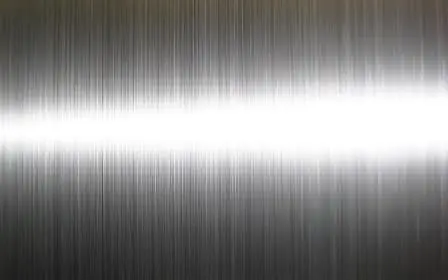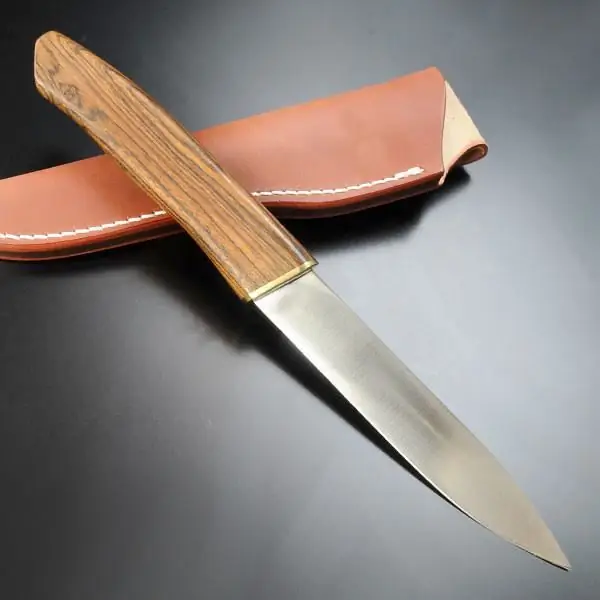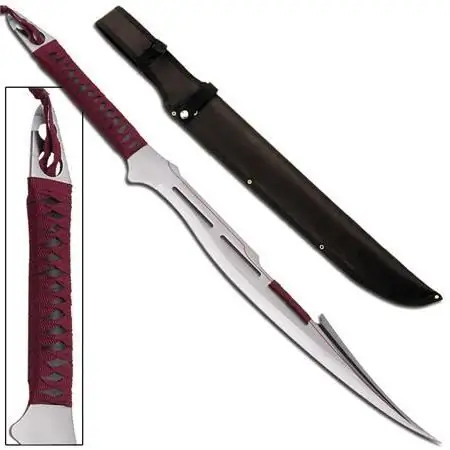2025 Author: Howard Calhoun | [email protected]. Last modified: 2025-01-24 13:10:41
Steel 65G, which is actively used for the manufacture of knives, is a material that is created on the basis of an alloy of elements such as carbon and iron. It is important to note here that the proportions of these two substances can differ significantly, depending on what qualities are required from the steel, and also why it will be used in the future.
General Product Information
A significant point included in the characteristics of 65G steel is its low cost. It is thanks to this that all products made from this alloy are in great demand.
The material itself belongs to the group of spring steels. Best of all, the substance lends itself to such operations as bluing and blackening. Due to the special qualities of steel, the material is most often used for the production of various throwing knives, rarely, but, nevertheless, it is used as a base when assembling cutting knives. Rare use of the alloy is due to the fact that it quickly rusts and oxidizes.
It is worth noting that the hardening of 65G steel is one of the main procedures, sincethe alloy is practically not afraid of high temperatures. The only disadvantage that can occur if overheated too much is a decrease in toughness.

Main product benefits
Among the main advantages of 65G steel, the following can be distinguished:
- Huge margin of safety. This suggests that even under high mechanical loads, the knives will not break or deform.
- High resistance to impact and deformation loads. It is because of this quality that the material is more often used to create throwing knives or swords, somewhat less often for medical-type scalpels.
- Sharpening the material is quite simple.
- Tear resistance is also high.
As for marking steel, the number 65 indicates the percentage of a substance such as carbon, in hundredths of a percent, that is, 0.65%. The letter "G" indicates that manganese has become the main alloying substance.

Negative qualities of the alloy
It is known that 65G steel also has a number of negative qualities that create certain restrictions on the use of the alloy.
- One of the most noticeable disadvantages is the strong susceptibility to corrosion due to the fact that the steel belongs to the carbon group.
- Despite the fact that the steel of this brand is sharpened quite simply, it is also easy and loses this sharpening. For this reason, it is necessary to constantly monitor the sharpness of the cutting edge andsharpen as needed.
- There are quite a few restrictions on the scope.
It is worth noting here that both advantages and disadvantages are relative properties. It is impractical to classify them absolutely with any product from this alloy. This is easily explained by the fact that every steelmaker uses production technology with some modifications. Sometimes the composition is not much different, and sometimes the difference is in almost everything. Naturally, the products in this case will be different.

Features of the composition
Certain properties of 65G steel have led to the fact that it is completely unsuitable for such a procedure as welding. However, even despite this, the scope remains quite wide, if you do not take into account the use as cold weapons. Such an alloy can be successfully used to manufacture parts such as springs, springs, metal structures, various components, etc. Steel is used in the assembly of trucks as a spring for the rear axle. In order to avoid such a defect as rust as long as possible, it is necessary to store products only in a dry place, and also periodically cover them with an oil composition.
It is worth noting that there is a document that regulates the main qualities of this product. Steel 65G is produced in accordance with GOST 14959-2016. This document only applies to steel made either hot rolled or forged.

It is worth emphasizing thatthe absence of a large number of elements for alloying the composition makes it quite cheap. In addition, hardening of 65G steel improves such parameters as wear resistance, high impact strength, and some others. Quenching takes place at a temperature of 800-830 degrees Celsius, followed by tempering at a temperature of 160-200 degrees Celsius.
Recommended:
Knives made of steel EI-107: characteristics of Zlatoust products

You can walk around shop windows for months, looking at the products of Zlatoust gunsmiths. Many people like to admire the famous stainless steel knives. At such moments, you suddenly begin to think about the quality of weapon metal. And to a greater extent about the characteristics of steel EI-107, used in the manufacture of a large number of knives, daggers and blades in Zlatoust. The history of the emergence of the Zlatoust brand and the advantage of purchasing products from this brand is interesting
Food stainless steel: GOST. How to identify food grade stainless steel? What is the difference between food stainless steel and technical stainless steel?

The article talks about grades of food grade stainless steel. Read how to distinguish food stainless steel from technical
Corrosion resistant steel. Steel grades: GOST. Stainless steel - price

Why metal materials break down. What are corrosion-resistant steels and alloys. Chemical composition and classification according to the type of stainless steel microstructure. Factors affecting pricing. Steel grade designation system (GOST requirements). Application area
Characteristics of steel 65x13: properties, hardness. Reviews about knives made of steel 65x13

In modern metallurgy, a huge number of steels are used. Their characteristics, as well as the variety of nomenclature, are truly immense
440 steel - stainless steel. Steel 440: characteristics

Many people know 440 steel. It has established itself as a reliable, anti-corrosion, time-tested hard material, which is most often used for the manufacture of knives for various purposes. What is the secret of this alloy? What are its chemical, physical characteristics and applications?

